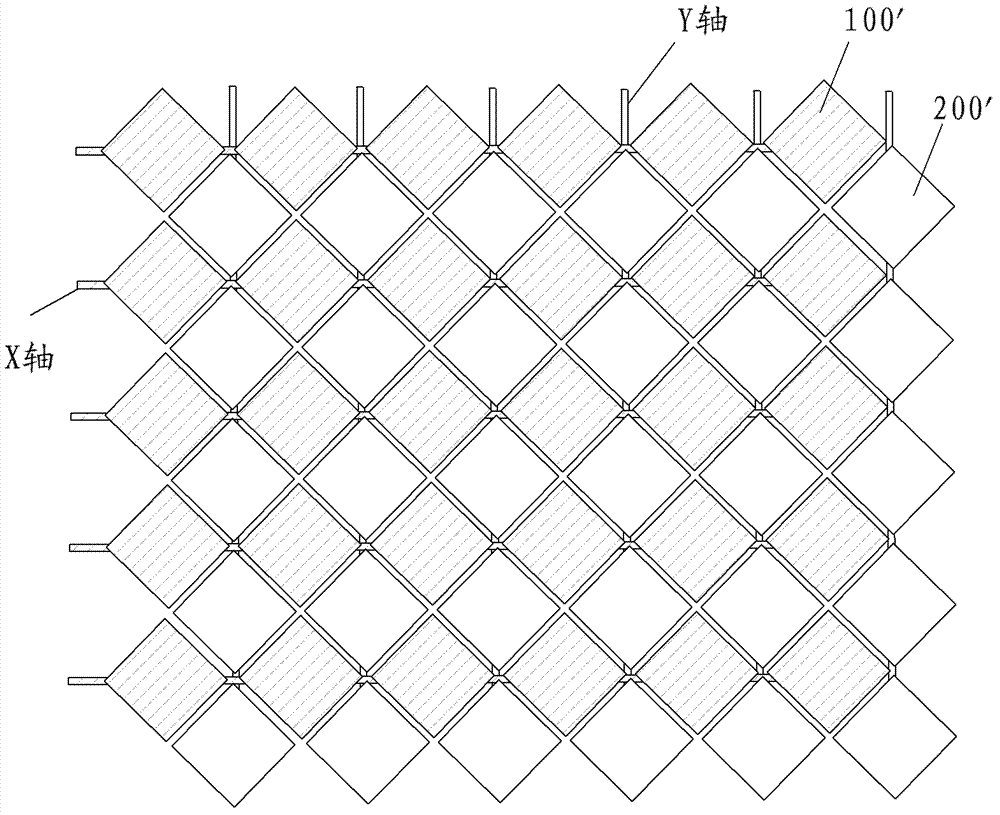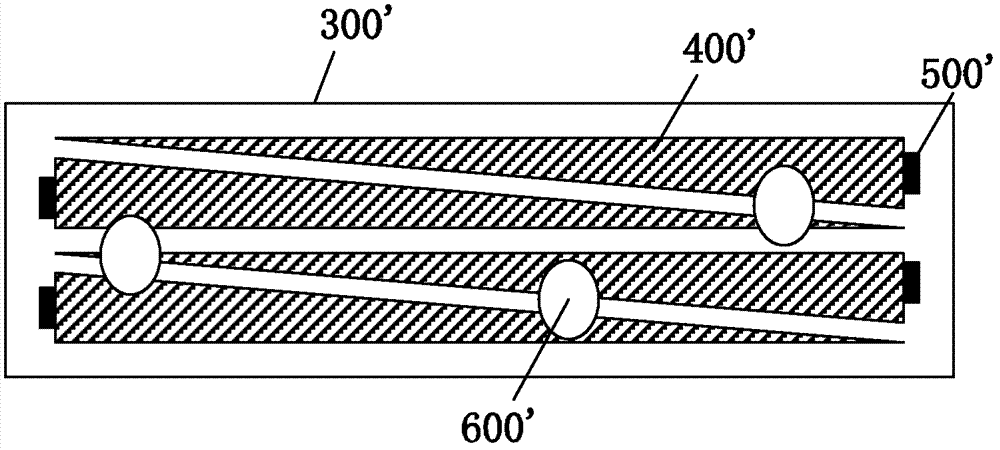Touch detection component, touch control device and portable electronic equipment
A touch detection and component technology, applied in electrical digital data processing, instruments, calculations, etc., can solve problems such as small capacitance change, offset in coordinate calculation, and insufficient linearity, and achieves improved linearity and linearity. , the effect of improving the measurement accuracy
- Summary
- Abstract
- Description
- Claims
- Application Information
AI Technical Summary
Problems solved by technology
Method used
Image
Examples
Embodiment 1
[0083] In this embodiment, the plurality of hollowed out parts 24 are divided into a first group 24a and a second group 24b arranged linearly along the extending direction, and the hollowed out parts 24a in the first group and the hollowed out parts 24b in the second group are in the extending direction Alternately arranged and partially overlapped in the direction perpendicular to the extending direction, in other words, each of the hollowed out parts 24a in the first group is arranged between two adjacent hollowed out parts 24b in the second group, and the hollowed out parts 24a in the first group The hollow part 24a extends from the upper edge of the sensing body 20 toward the lower edge of the sensing body 20 in the width direction of the sensing body 20, and the hollow part 24a in the first group is spaced apart from the lower edge of the sensing body 20, and in the second group The hollow part 24b of the induction body 20 extends from the lower edge of the induction body ...
Embodiment 2
[0094] In this embodiment, the sensing body 20 has a first end and a second end, the first electrode 21 is connected to the first end of the sensing body 20, the second electrode 22 is connected to the second end of the sensing body 20, and the current path part 25 Extending in a curvilinear manner between the first and second ends so that the length L of the current path portion 25 is greater than the length of the induction body 20 in the extending direction of the current path portion 25 .
[0095] Wherein, the current path portion 25 extends between the first end and the second end and has a cross-sectional area on a plane perpendicular to its extending direction smaller than the cross-sectional area of the induction body 20 on the plane, in other words, the current path portion 25 is vertically vertical. The width h in the direction is smaller than the width of the sensing body 20 . For example, when the sensing body 20 is rectangular, its length direction is the direct...
Embodiment 3
[0104] In this embodiment, there are two current path portions 25, one of which is adjacent to one side of the induction body 20 extending along the extension direction, and the other current path portion 25 is adjacent to one side of the induction body 20 extending along the extension direction. Another side. As a result, the total length of the current path portion 25 , that is, the length of the current flow path increases and the width decreases. For example, when the sensing body 20 is a rectangle, such as Figure 15-17 As shown, one of the current path portions 25 is adjacent to the upper side of the sensing body 20 and extends along the left-right direction, while the other current path portion 25 is adjacent to the lower side of the sensing body 20 and extends along the left-right direction.
[0105] Optionally, a plurality of hollowed out parts 24 are arranged linearly along the extending direction, and each hollowed out part 24 is substantially X-shaped, such as F...
PUM
 Login to View More
Login to View More Abstract
Description
Claims
Application Information
 Login to View More
Login to View More - R&D
- Intellectual Property
- Life Sciences
- Materials
- Tech Scout
- Unparalleled Data Quality
- Higher Quality Content
- 60% Fewer Hallucinations
Browse by: Latest US Patents, China's latest patents, Technical Efficacy Thesaurus, Application Domain, Technology Topic, Popular Technical Reports.
© 2025 PatSnap. All rights reserved.Legal|Privacy policy|Modern Slavery Act Transparency Statement|Sitemap|About US| Contact US: help@patsnap.com



